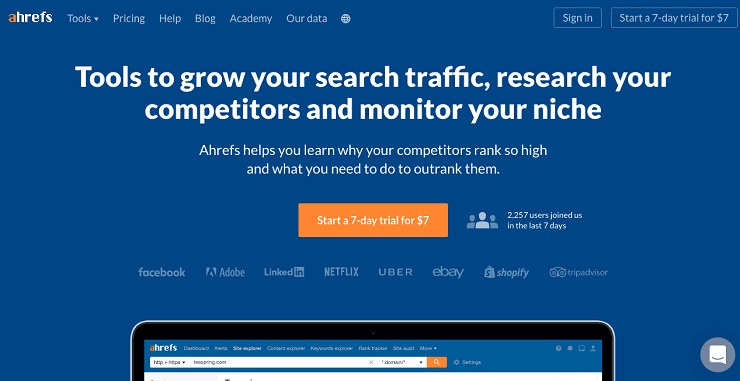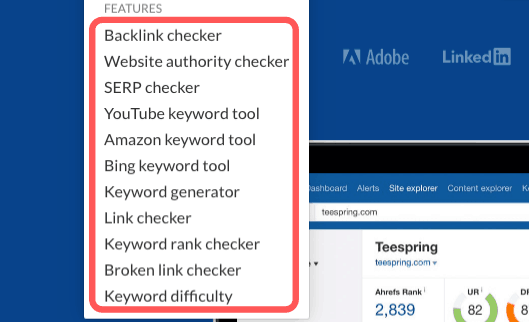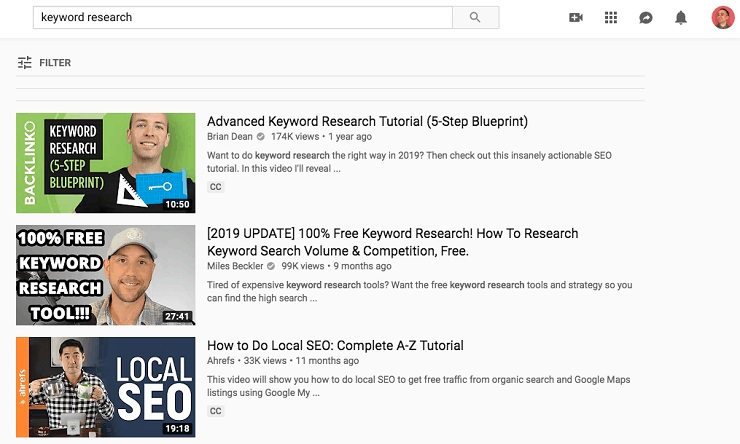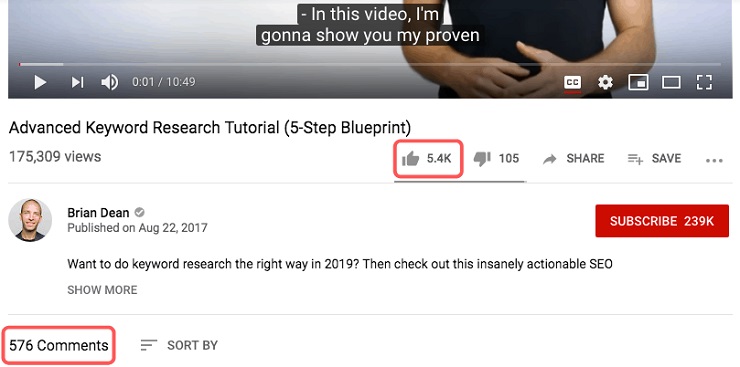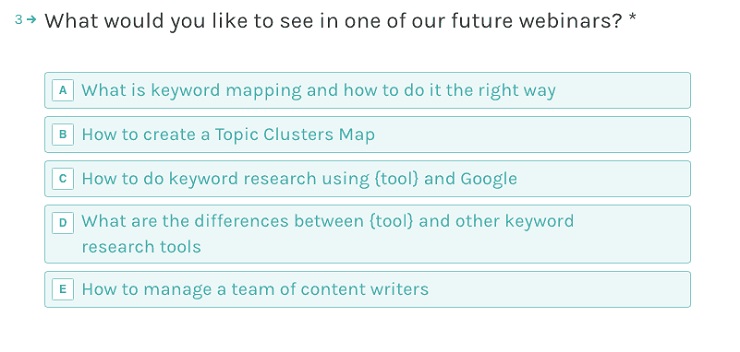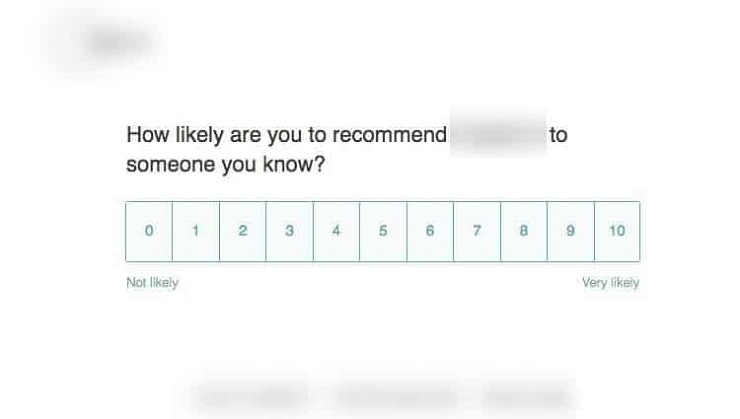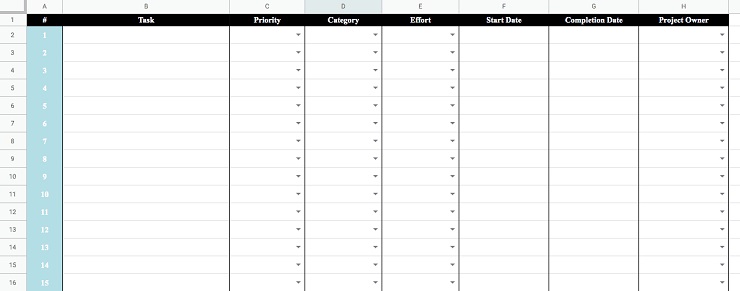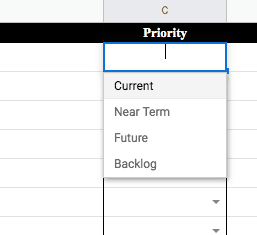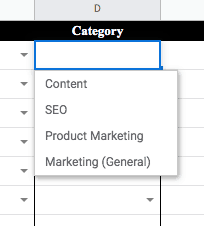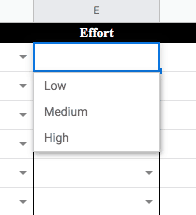Churn is a real problem for SaaS companies, especially newer businesses that are just getting started and losing money by the fistful before they get to break even.
You may already know that content creation can help you acquire new customers, but did you know that it can also help you retain them? You can use content to educate your customers, to turn them from simple users to power-users, and keep them deeply engaged with your product.
In this post, we’ll talk about how to reduce customer churn and keep customers longer using content creation.
Specifically, I’ll show you how to:
- Identify the main problems and needs that your customers have
- Create content that educates your customers
- Use content to improve retention for your SaaS
We’ve got a lot to cover, so let’s get started.
FREE MASTERCLASS: How To Start a Tech Startup And Get Your First Customer In 60 Days
Table of Contents
Identify the Main Problems and Needs Your Customers Have
Reduce Customer Churn by Creating Content That Educates Your Customers
Get Your Educational Content in Front of Your Users
Final Thoughts
Identify the Main Problems and Needs Your Customers Have
According to research by ProfitWell, churn strongly correlates with company age. The research discovered that older companies have significantly lower churn than younger ones.
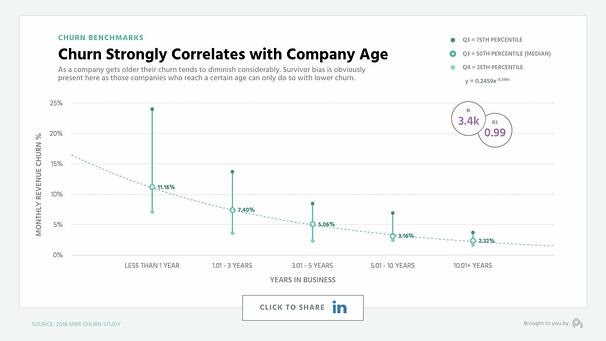
This means that the younger your SaaS company is, the higher the likelihood that churn will be a major problem for your business. However, the question should not be how churn is affected by company age.
Instead, the question you should be asking yourself is this: Why do users churn in the first place? In other words, you have to find out what makes your customers leave to begin with. Once you do that, you can create content that will help retain them.
According to Hubspot, SaaS businesses fail to retain their customers due to one or more of the following reasons:
- Lack of product engagement
- Lack of proactive support
- Bad user experience
- Product issues
- Poor product-market fit
Content may not be able to help you find a product-market fit or fix product issues, but it can definitely help you with the three remaining factors that can negatively affect your retention.
Identify the Main Problems Your Customers Have
To start learning how to reduce customer churn, you need to identify the main problems your customers have and the reasons they started using your product in the first place. Let’s illustrate the process using a simple example.
Imagine that your SaaS is an SEO software similar to Ahrefs.
Source: Ahrefs
If you click on “Tools” in the top navigation menu and scroll down a bit, you’ll see that Ahrefs has the following product features:
Source: Ahrefs
Behind each of these features is a human problem—a need that you have to cover. Of course, a feature can cover many needs and solve many problems. This is why you have to identify what these needs are and create content that helps your customers overcome their problems.
As you can see in the above screenshot, one of the main needs that Ahrefs covers is keyword research—a major problem for many companies and individuals.
The fact that your SaaS has such a feature means you need to find all the subtopics related to your main topic (your product feature), and map them out so that you know exactly what the problems are that relate to that feature.
Here are some ways you can do that:
1. Do Some Basic Keyword Research
This method and the next two can actually be included in any one keyword research process. However, I am breaking them down into separate methods to help you understand how to more easily identify the problems your customers have.
The first step is to do some basic keyword research. Assuming that the main topic we want to cover is “keyword research,” one of the first things you need to do is Google that topic. In the search results, you’ll get a list of paid and organic listings:
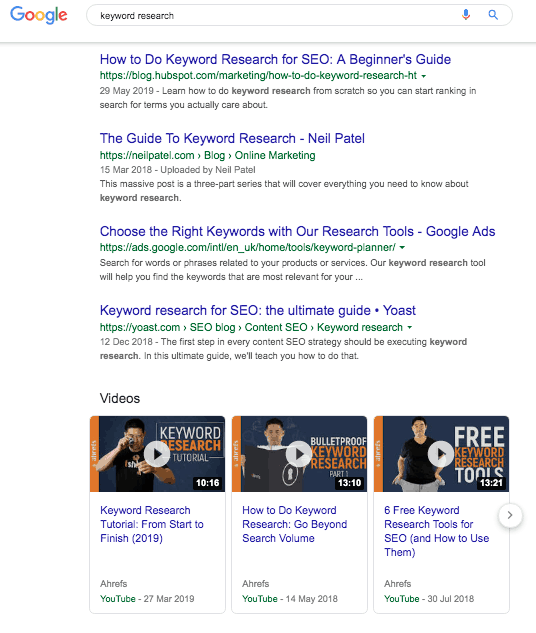
You’ll notice that there is plenty of content published on this topic already. Some of them are simple blog posts, while others are YouTube videos and guides. Scanning the topics, you can find some interesting angles that could be tied to a customer problem.
Remember: You need only look for topics that are strictly connected to your product features.
Keep in mind that all of the content you are finding exists to satisfy the same purpose of what you are also trying to do, in one way or another. It’s trying to educate users about another existing product.
You don’t always need to reinvent the wheel and look for a different angle of covering the topic—sometimes, you can just use a similar approach others have taken before you as an example.
In the same vein, you can use other search engines and platforms to discover content that has been published around the topics you want to cover. For example, you can use YouTube:
Source: YouTube
Look for videos that get a lot of engagement, including comments and likes.
Source: YouTube
Usually, the higher the engagement—especially comments—the higher the likelihood that this is content many people are interested in. For example, based on the engagement in this video above by Brian Dean, advanced keyword research could be a hot topic. Once again, though, this has to be relevant to your product features and the problems your customers could possibly have that you are trying to solve.
Last but not least, you can use a tool like Ahrefs to discover content opportunities that could help you improve your retention rate. First, you need to visit Ahrefs’ Keywords Explorer:
Source: Ahrefs
You then simply insert the keyword that interests you and click enter:
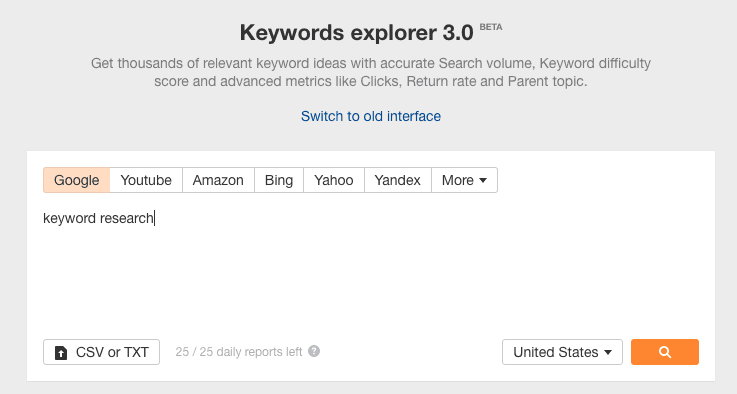
You’ll get an instant overview of how things look in the search results for your target topic:

In the left side of the Overview menu, you can click on one of the options that exist under “Keyword Ideas.”
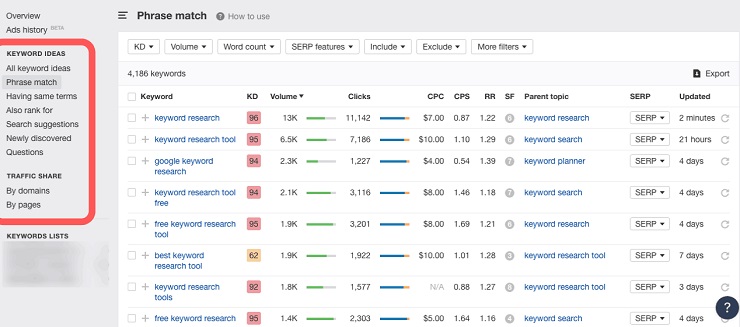
Here, you can choose from among hundreds if not thousands of keywords to use in your content. Once again, you’re doing this to understand problems and solutions that will help you retain your customers. These keywords can clue you into what people in you industry are searching for. If any of these hot topics match your product features, we can use them for our content creation to help retain customers.
Making the Connection
Next, we need to connect the keywords (potential customer problems) we found to our actual users.
For example, as you can see in the previous Ahrefs screenshot, a keyword with a high search volume is “google keyword research.” This shows us that people are interested in learning more about keyword research with Google.
How can you make the connection though? How can you identify this as a problem that your users have and create relevant content about it? It’s simple: You can ask your customers.
When something is a problem for them, most of the times they will let you know about it. But, to tell you about it, you have to ask first. A great way to do that is by using forms to collect feedback on what topics interest your customers, based on the research that you’ve done.
For example, let’s assume that you’ve hosted a webinar on keyword research exclusively for your customers. And that in the end of this webinar, you kindly asked the people who attended the webinar to answer a few questions related to it. Such a question could be:
(The tool I am using for this example is Typeform.)
As you can see, one of the options in our question came from the keyword research that we’ve done. This way, you are not guessing out of thin air, and you can make decisions that are based on your customers’ feedback and your keyword research. This combination can be truly powerful.
Of course, there are many other ways to ask for feedback from your customers. However, in my experience, the best time to ask for such kind of feedback is when they are in the “learning mode.” This means that they either attend one of your webinars, read one of your guides, or perform some kind of action that shows that they want to learn.
Let’s move on to the second method you can use to identify customer problems.
2. Research Relevant Communities
In my experience, this is one of the most underrated methods that modern SaaS businesses use to identify customer problems. You see, most SaaS businesses are “too busy” to research relevant communities and engage with the users that hang out in them.
I remember a call I had from the head of customer support of one of my SaaS clients a while back. After doing our usual catch up, he told me, “By the way, I replied to two comments on one of these Facebook groups you told me about, and got both of these prospects to sign up for a free trial.”
I wasn’t surprised. People use online communities to:
- Express their problems
- Provide solutions to each other
- Try to find answers to their questions
How can you use these communities to discover content opportunities that will help you retain your customers? Let me share two examples with you.
The first one is Reddit, a platform that consists of interest-based micro-communities called “subreddits.”
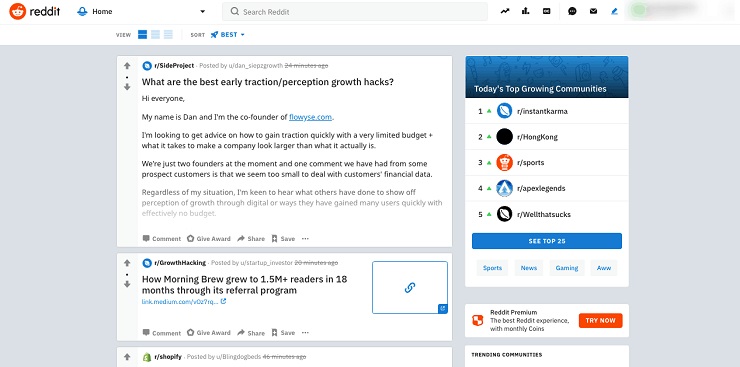
You need to search for the communities that are relevant to what you’re selling and the main issues that users in these subreddits experience. In the communities you’ll discover, you want to find posts that are relevant to your product features and the problems that your product is solving.
When a post has a lot of comments, it usually means that numerous users are interested in that topic or experience that problem.
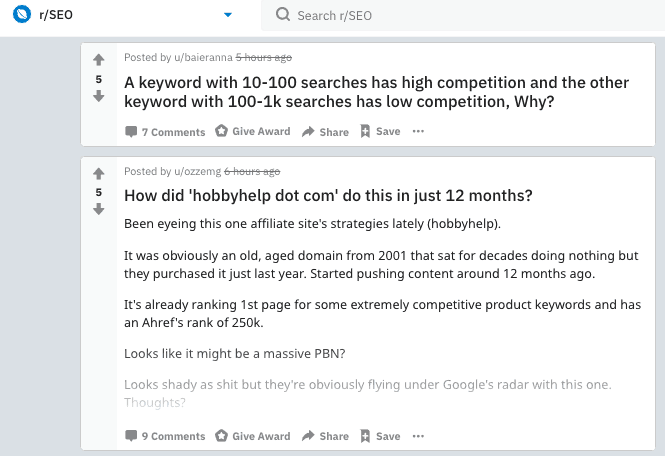
For example, as you can see in the above screenshot, a user wants to know why “a keyword with 10-100 searches has high competition, while a second keyword with 100-1K search has a low competition.”
Since your product has a keyword research feature, this question could make a good topic for your customers. Two questions arise here:
- If this is a question/problem that your customers have
- What kind of content you have to create to help your customers with that problem
To answer the first question, remember, we have to ask your customers if this is a question they actually have. You can ask something really simple:
Are you interested in knowing why low volume keywords have high competition, while high volume keywords have low competition?
Based on the feedback you receive, you will decide what kind of content you will create. If, for instance, you see that this issue troubles many people, then you may consider hosting a webinar about it or even adding a note in your product, like Ahrefs does for most of its columns:
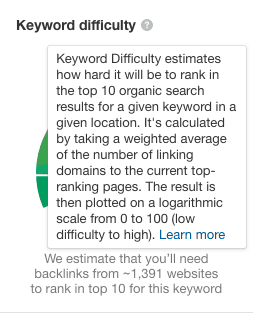
In the same vein, you can use Facebook groups. Similar to subreddits, try to discover relevant communities and identify content opportunities based on the popularity of the topic and level of engagement.
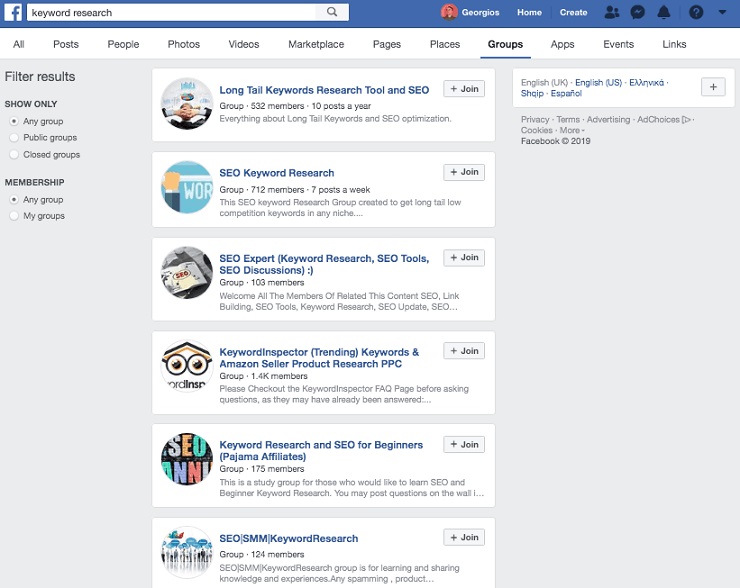
Once again, before creating any new content pieces, try to connect the dots between what is popular in micro-communities like Facebook groups and what your customers experience on a daily basis.
This process will generate a pool of topic ideas. You then need to validate those ideas by collecting more feedback from your customers and by taking into account behavioral data on a product level.
Let’s move on to the next method.
3. Discover Content Gaps of Your Competitors
It’s essential to identify the content gaps (important topics to your target audience that haven’t been covered) among your competitors and try to fill those gaps with your own content.
What are some of the best-performing content pieces from your competitors? When I say “best-performing,” I don’t mean in terms of traffic. Traffic is important when it comes to acquisition, but we want to discover opportunities for retention.
If you think about it, when a piece of content is successful, it means that it somehow helped people solve a problem or perform an important action on a product level. Your job is to identify such opportunities and help your users:
- Solve the problems they have
- Better use your product to overcome those problems
Since your product is similar to your competitor’s product, you’d want to know what are the content pieces that your competitor’s customers find to be most valuable.
The fact that a content piece is valuable for someone who is already paying for a product means that the value of the content is directly connected to the value that the user takes from the product.
In other words, the user learns how to get the most out of the product and thus keeps using it. This is something that you want to replicate and use to improve the retention for your own product.
The process you can use to do so yourself is very simple. First, visit Ahrefs and insert your website in the Site Explorer:

Next, click on “Content gap” in the left Overview menu:
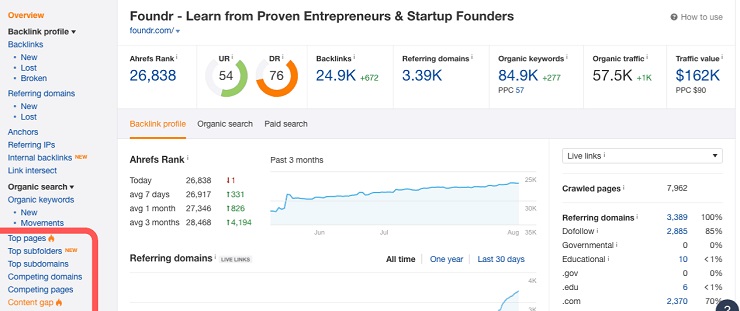
Inside Content gap, all you need to do is insert the domains of your top competitors and discover opportunities for content that could improve your retention.
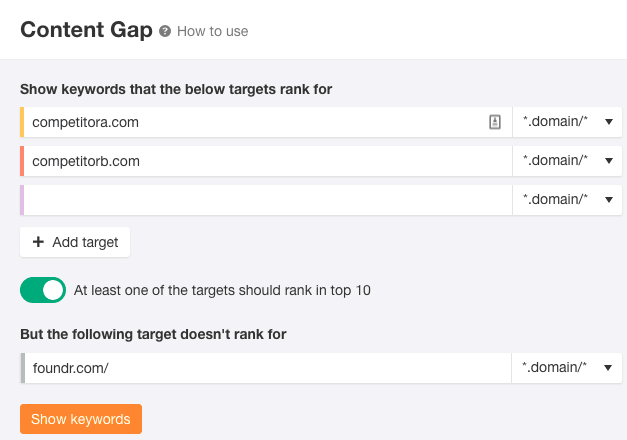
You can also do this with simple research on your competitors’ online assets and social media outlets.
Remember, we aren’t trying to identify competing content opportunities based on search traffic, as we are interested in retention and not acquisition.
However, the content gaps you’ll discover here may help in the overall process of improving retention through content. In the next section, we will cover how to incorporate the data you collect here into content to help improve retention.
4. Look for User Questions Online
Why do people ask questions? Maybe it’s because they have a problem that needs to be solved, or perhaps because they need information on a certain topic. In any case, asking a question implies need.
There are many places you can look for questions online, but I will suggest the two most prominent.
The first is Google’s “People also ask” box and the second is Quora. Both can be powerful tools in helping you to find problem-related questions your customers have.
Here’s what the People also ask box by Google looks like:
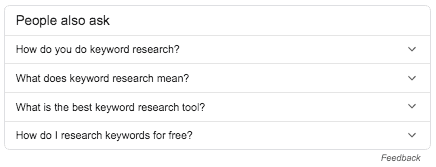
Not all search queries have a People also ask box, but most queries with informational search intent do.
Rest assured that some of these related questions exist in your customers’ minds as well—which means that if you want to keep them engaged with your product, you need to be in a position to answer them before someone else does.
Google recently updated the People also search function so that now, every time you click on a question, other relevant questions pop up in the little box. This makes the feature an even better source of questions related to what users are searching for.
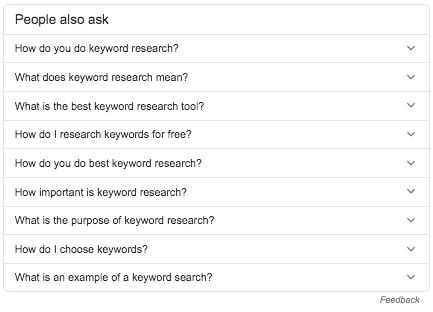
The second place to discover great questions is Quora, a platform devoted to questions and answers. Not all Quora questions are displayed in Google’s top search results, so you need to specifically search the site.
To do that, you first need to set up a Quora account. You then only need to enter the topic that interests you—ones related to the problems your customers need help with—and click enter:
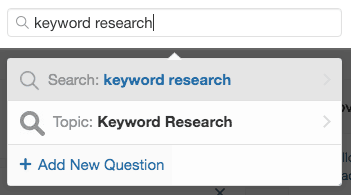
Next, click on “Questions.”
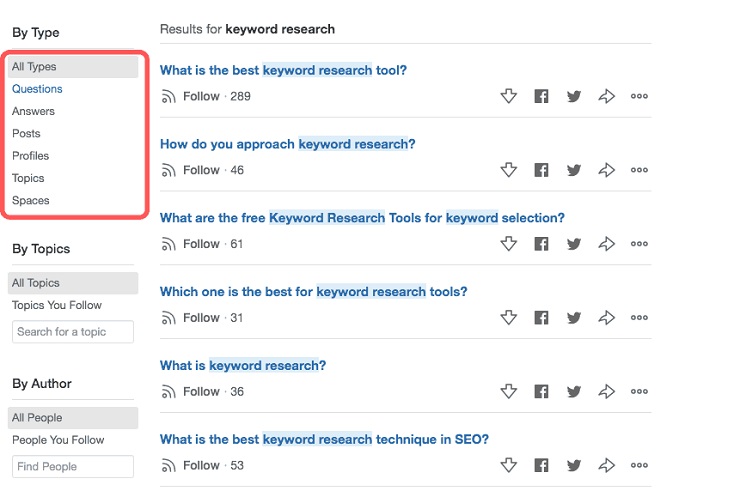
You’ll instantly get a huge list (depending on the popularity of the topic) of questions people ask on Quora. Will you be the one to deliver answers? If so, you’re one step closer to retaining these customers and preventing them from leaving your SaaS for another solution.
You will do this through specific content that we will discuss later on in this article. Right now, we’re still just gathering data.
5. Collect User Feedback to Identify Problems and Content Opportunities
The last—and most important—thing to do is to collect user feedback. Even though I appreciate both quantitative and qualitative feedback, I must say that qualitative feedback is much more important when it comes to retention.
Moreover, you need to collect feedback on a product engagement level, which means you need to understand what frustrates users and makes them stay away from your product in the first place.
Is there something with your onboarding, or maybe an important product feature that’s just too difficult to use? No matter the case, it’s your job to identify what makes your customers’ lives difficult and try to help them. The best way to do so is through:
- Customer interviews (only for paying customers)
- In-app messages and surveys
When I say in-app messages and surveys, I don’t mean the generic NPS survey that most SaaS companies use to collect feedback from their customers:
After all, we’re going for qualitative feedback. You can use something like the following message that’s adjusted to your needs:
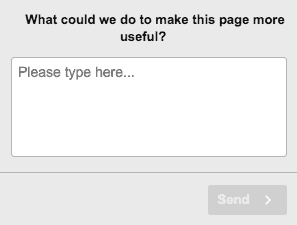
In our example, it could be something like: What else would you like to know about keyword research? What are the main problems you have when it comes to keyword research?
Some tools you can use to identify the missing parts of the user experience, or the problems your customers experience:
We aren’t following the above process to list every problem out there that’s related to your product, but rather than to identify the problems your customers have.
Unfortunately, by the time most SaaS companies realize the importance of using content to gain traction or retain their users, it’s too late.
On the other hand, those companies that invest time and resources to create content that educates their customers are usually the ones that succeed.
How exactly can you create content that educates and inspires your customers to keep using your product? I’ll cover that in the next chapter.
FREE MASTERCLASS: How To Start a Tech Startup And Get Your First Customer In 60 Days
Reduce Customer Churn by Creating Content That Educates Your Customers
Content that you create to educate your customers is not destined for search engines. Therefore, you don’t need to worry about SEO at this point. This doesn’t mean you don’t want to (potentially) create content that’s more visible. It just means that it shouldn’t be your primary focus.
In this case, you’re creating content to educate your customers, to turn them from simple users to power-users and to keep them engaged with your product.
I know what you’re thinking: Can this process really improve my bottom line?
Let me share a quick example with you.
Did you know that email marketing tool ConvertKit grew from $98,000 to $625,000 in monthly revenue by doing 150 webinars in just one year?
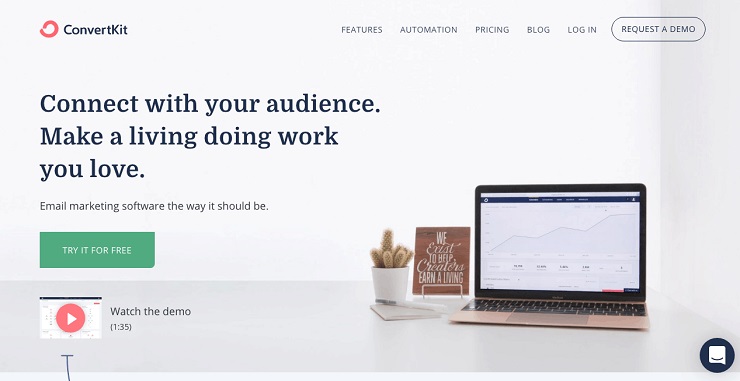
That’s a 637% increase in one year by using one simple, content-based tactic. Of course, not all their webinars were aimed at existing customers, but many of them were.
To get that kind of outcome, you have to be focused on creating value for your customers—and creating value isn’t always connected to improving product features or adding new ones.
After all, as Drift CEO David Cancel puts it, “If you’re building a SaaS company today, you can’t win on features, you have to win on brand.”
By now, you’ve compiled a huge pool of problems that your customers have. Now you need to prioritize, choose your content formats, and start creating the actual content.
Come up with a Prioritization System
When working with clients, I prioritize content creation based on three things:
- How important the problem is for the customers (Importance)
- How many customers seem to have this problem (Acceptance)
- What the overall impact is of what we’re going to create (Impact)
To understand which of the topics are essential, I usually insert them into a simple Google sheet and prioritize them based on the three factors. For each factor, I choose a number from 1-5:
This way, you’ll focus on the things that matter most instead of randomly creating content around every topic on your list.
Now that you’ve prioritized your topics, you can start creating content.
Create a Content Roadmap
If I had to guess, I’d say that you have some kind of product roadmap for your SaaS. You may have created it at the end of the previous year, after taking a look at your competitors and having an extended discussion with your product team.
Unfortunately, even though most SaaS businesses focus on improving their products, they rarely systemize their content creation efforts. I always recommend creating and using a content roadmap, just to keep everything in order.
You may be using Trello, Jira, Pipefy or another project management tool for your product team, but all you’ll need when it comes to creating your content roadmap is a Google Sheet.
Here’s what the template I’m using with my clients looks like:
Let’s take a closer look at each column.
Priority is based on the prioritization process we followed earlier. Here, you have four options:
Category has the following four options:
In your case, most content pieces will belong to the “Product Marketing” category, as you want to create content that educates your customers.
Last, we have effort, which is determined by the format you’re going to use and the experience of your product marketing/content creation team:
All the other fields are self-explanatory.
I have no doubt that creating a content roadmap will help you a great deal in streamlining your processes and keeping good track of everything.
Start Creating Content
Content creation can be challenging, since it requires:
- Time and resources
- Good knowledge of the product
- Many different teams to work on the deliverable
Usually, when creating content that aims to educate your users, you have to ask for assistance from your customer support team, your product team, and your marketing team.
Thus, one of the most difficult parts for the person/team handling content creation is to collect information from among these different entities. One thing I’ve found very effective here is to have one-on-one calls or meetings with the people involved and ask very specific questions.
Bonus Tip: You can use a tool like Whereby to record your calls so that you can use them at any time.
Assuming that you want to create a keyword research course for your SaaS—since you’ve identified it as a big problem among many of your customers—you’ll also need a content creator who possesses deep knowledge of the product.
This means that—most of the time—you can’t use someone outside the company. However, you can use freelancers from websites like Upwork if you need help with certain parts of the content creation process.
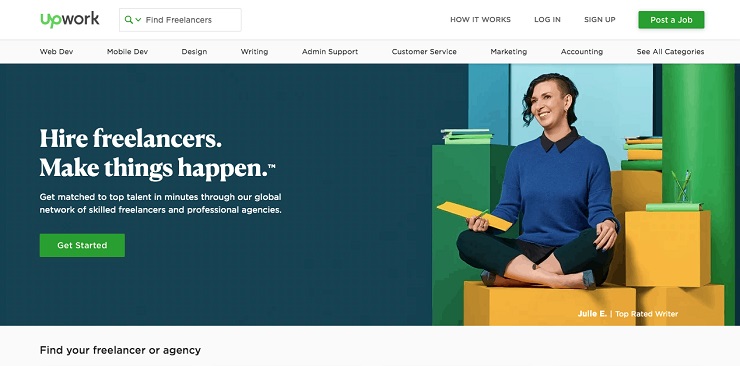
For example, having a freelancer make the slides for your course will help you scale your time and focus on the things that matter.
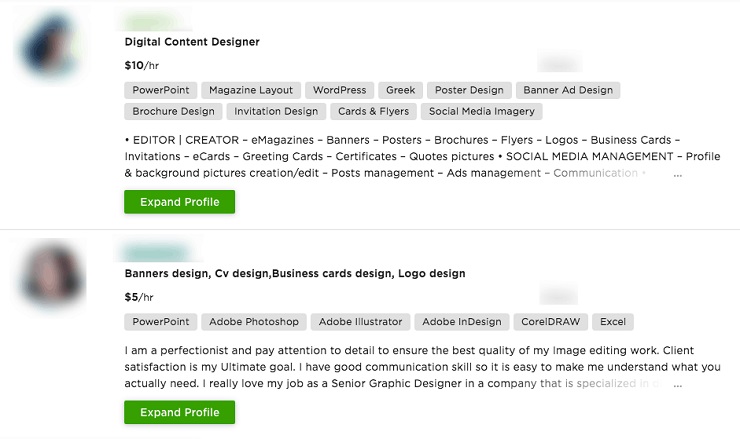
Delegation can be very helpful, especially when you lack resources.
Something very important here is how to choose content formats. Usually, when you’re creating content for education purposes, you can use:
- Extensive guides
- Case studies
- White papers
- Webinars
- Courses
Feel free to read this guide on white paper marketing to learn more about this content format.
There are many other content formats that may be more useful in other stages of the customer lifecycle journey (i.e. acquisition). However, in my experience, these formats are the most suitable for customer education.
For example, look at how Hotjar ensures that its users and paying customers know how to use each individual feature of their product:
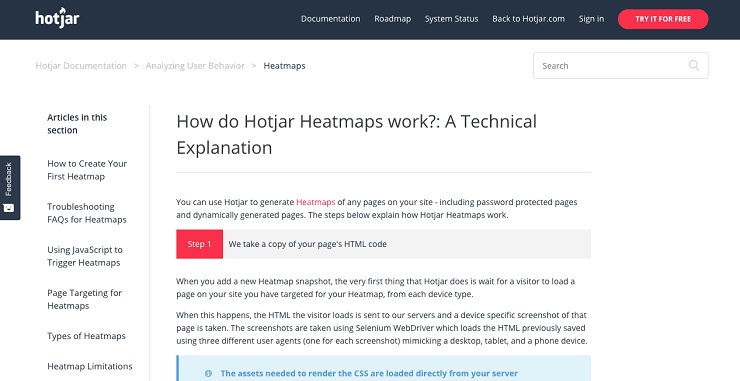
If you have to get a bit technical, don’t be afraid to do so. After all, this content is not aimed at your potential customers, but rather your existing ones.
On a similar note, here’s how Asana educates its users around the correct use of their product:
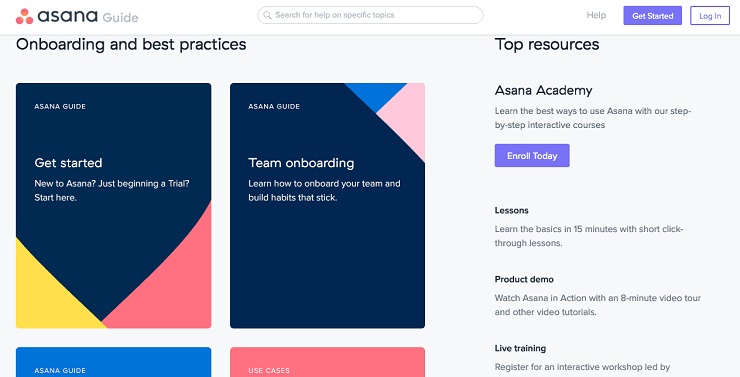
From guides to click-through lessons and live training, Asana’s customers can find answers to all their questions on how to get the most out of the product.
Another example is how Moosend is using these newsletter templates to help its users get the most out of its product:

All of these efforts—which, by the way, each have different formats—aim to keep customers engaged with the product. By helping your customers experience more value, you essentially manage to retain them longer.
Of course, there are other factors that affect retention, such as product usability, market changes, business directives, and competition. Nevertheless, content is one of the best ways to improve your retention efforts.
Let’s move on to the next chapter, where I’ll give you some final advice on how to use content to improve retention for your SaaS.
FREE MASTERCLASS: How To Start a Tech Startup And Get Your First Customer In 60 Days
Get Your Educational Content in Front of Your Users
Now, as you probably already know, creating content is not enough. You also need to put that content directly in front of your customers. The question is, how can you do that?
There are many ways to distribute your content. When you want this content to reach your customers, you don’t have to worry about SEO optimization or any such actions at that point.
Let’s look at some practical methods of putting your content in front of your customers. For example, here’s how Ahrefs notifies its customers about new content while they’re using the web app:

If you think about it, when someone is already using your application, you already have their attention. Thus, if you ask for something more from that user, or prompt them to read one of your educational pieces or watch one of your videos, then chances are they will respond positively.
This is a powerful way to:
- Let users know about new pieces of content
- Show them that you’re actively trying to educate them
Another way you can get content in front of your customers is to send them triggered emails based on actions they take on your SaaS.
Using a tool like ActiveCampaign, you can set up automation rules based on product engagement and actions that your customers take inside your SaaS.
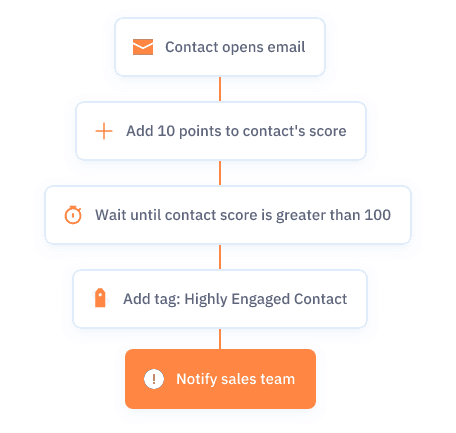
A third tactic you can use to get your content in front of your customers is to retarget through Facebook Ads.
The way to do that is by creating retargeting audiences based on specific URLs from your website:
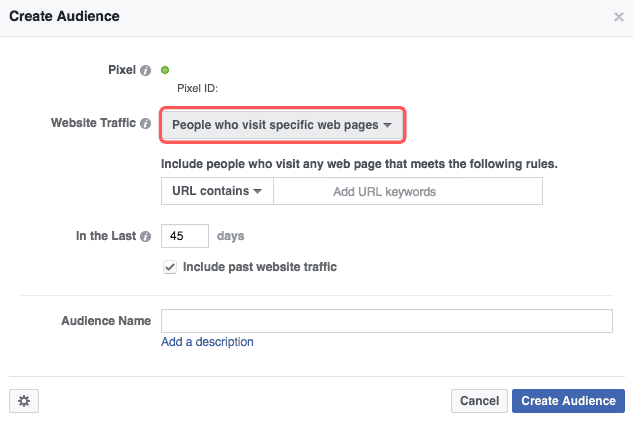
Note that if you have only a few users visiting your app every day, this tactic probably won’t work for you.
You can then retarget those people and promote guides, templates, webinars or other content pieces that you’ve created to keep them engaged with your product. Here’s how Ahrefs is doing it:
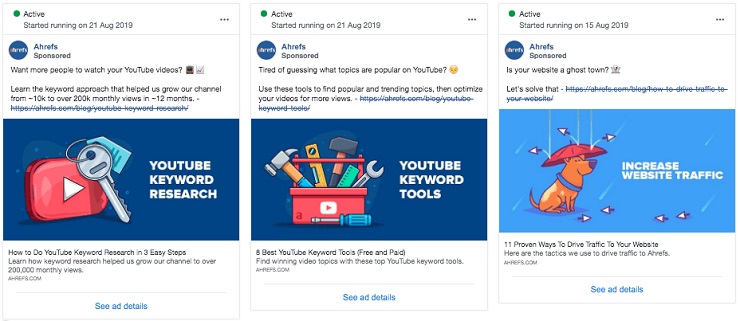
No matter what promotion paths you choose, you need to keep one thing in mind: You don’t want to harm the user experience and you definitely don’t want to be intrusive.
In other words, you have to respect your customers’ time and try to reach them in a way that feels both natural and helpful. Otherwise, you’ll see your no result whatsoever from you content efforts.
Let’s close this article some final thoughts.
FREE MASTERCLASS: How To Start a Tech Startup And Get Your First Customer In 60 Days
Final Thoughts
Creating content that educates your customers isn’t easy. This is why many SaaS companies seem to avoid it, instead focusing on other aspects of their business such as the product or lead generation.
However, if you manage to create a process and a mechanism around it, you’ll manage to witness the benefits of your efforts firsthand.
Throughout the years, I’ve noticed that SaaS companies that invest in content always seem to find a product-market fit and start growing.
Now I’d like to hear from you:
Do you have any questions on this process, or how to use content to reduce churn? Let me know by leaving a comment below.

